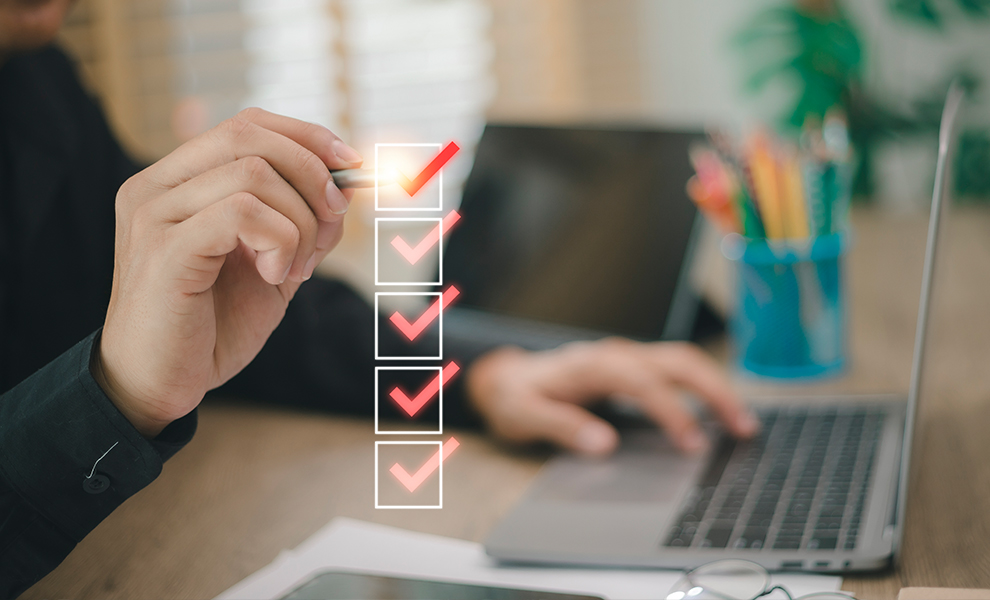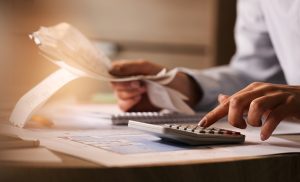A Self Assessment tax return is a paper or online form you submit to HMRC to show your taxable income, enabling the taxman to determine whether you paid too much or too little tax.
People who earn income from investment properties, self-employed individuals, and ministers must file a tax return. However, a common misconception among landlords is that since they pay taxes on their work income, they do not need to tell HMRC about rental gains.
That is simply not true. A tax return covers all earned income, irrespective of where the income is from. The additional tax must be paid, either through a Self Assessment tax return or an adjustment to your PAYE coding notice.
Landlord Self Assessments: A daunting prospect for most
Before we further explore Self Assessment tax return property incomes, it is crucial to understand that the profit from rental earnings, not income, are taxed. Profits equal rental revenue minus expenses, provided they can be deducted.
If a landlord’s taxable profits are more than £2,500 or their rental income before costs are more than £10,000, they must file a Self Assessment tax return, including the property pages.
If you own the property with someone else, you will have to keep track of your share of rental income and costs separately. The joint owner must report their part individually.
Self Assessment tax returns should include all taxable income, not simply rental income and expenses. If a tax deficiency emerges, HMRC must be paid. If you overpay tax, HMRC reimburses you.
If you are not already registered, Self Assessment registration for landlords should be completed by 5 October in the tax year after you start to receive rental income.
Steps to filing landlord Self Assessment tax returns
If you earn rental income, you must consider the tax consequences and choose the best strategy for handling it, including whether or not it has to be declared.
To minimise your concerns and queries, we have created this landlord Self Assessment guide, which will help you understand the many steps of the landlord Self Assessment process and how to pay taxes on rental income.
1. Register for Self Assessment
If you have not yet enrolled for Self Assessment, you must do so by 5 October of the tax year following the one in which you started your landlord business, i.e., started collecting rental revenue.
For instance, if you started renting in the tax year 2022–2023, you must register for Self Assessment by 5 October 2023. HMRC may penalise you if you do not register before the deadline.
You will obtain a user ID and password when you register. Set up your personal tax account to handle your taxes online. You may file your tax return online or on paper after registering.
MTD ITSA ultimately aims to eliminate paper tax returns. If you are a landlord making more than £10,000 a year, you must sign up for MTD by April 2026.
2. Keep your paperwork in tip-top shape
To figure out your taxable profit, you need to keep track of how much rent you get from tenants and how much you spend on items associated with your landlord business. If HMRC opens an investigation, they may want to look at your documents. To be on the safe side, maintain records of your:
- Bank statements
- Mileage logs
- Rent books
- Invoices
- Receipts
It is recommended to keep your records for at least 22 months after the end of the tax year that the tax return pertains to avoid potential penalties from HMRC for having inaccurate records.
If you file your 2022 to 2023 tax return online by 31 January 2024, it is essential to retain your records until at least the end of January 2025.
3. Work out landlord tax deductions
Many landlord expenses are tax deductible. These deductions help you calculate Self Assessment property income and total taxable profit. However, your expenditure must be “wholly and solely” for renting property. Allowable costs include:
- Property repair and maintenance costs (but not improvements)
- Accounting and letting agents’ fees
- Replacement of domestic items
- Landlord insurance
- Running costs
4. Fill in the landlord Self Assessment tax return
When you submit your tax return information online, HMRC’s system will remove any unnecessary sections and will ask you to customise the return based on your income. If you are a UK landlord, you will need to complete the section on UK property, in which you will provide HMRC with information about the following:
- Rental income and other receipts from UK land or property
- Revenue from letting furnished rooms in your own house
- Furnished holiday lettings in the UK or EEA
- Premiums from leasing UK lands
Everybody needs to fill out form SA100 for their tax returns. If you are self-employed, you should fill out SA105 and additional documents, such as SA103.
5. Stay on top of landlord tax deadlines
As a landlord, there are several deadlines you need to be aware of. If you choose to file your Self Assessment tax return on paper, it must be submitted to HMRC by midnight on 31 October. If you prefer to file your tax return online, you have until midnight on 31 January to do so.
This is also the deadline for paying your taxes and opening an account to make advance payments towards your bill for the next tax year. If you fail to meet the deadlines for filing your Self Assessment tax return, you may be subject to penalties.
6. Pay your landlord's tax
HMRC will calculate your tax bill and send it to you. If you filed your tax return by mail, you would receive a bill in the mail. If you filed your tax return online, you can view your tax bill by clicking “View your computation” on the HMRC website.
Your Unique Taxpayer Reference (UTR) number, followed by “K”, will be your payment reference. There are several ways to pay your taxes, including online or telephone banking through the Clearing House Automated Payment System (Chaps), paying with a debit or corporate credit card at your bank or building society, or using Bacs, direct debit, or a cheque.
Online or telephone banking is the fastest way to pay taxes, while Bacs, direct debit or cheque may take longer. There are penalties for not making your payment on time.
If your charge is over £1,000, you will also be required to make an advance payment towards your next Self Assessment bill. Account payments are due on 31 January and 31 July. If your bill is less than £30,000 and is due on 31 January 2023, you can use HMRC’s “Time to Pay” tool to set up an online payment plan. Time to Pay allows you to spread your payments over a year.
Over to you
HMRC provides detailed instructions for landlord Self Assessments, which can confuse new landlords. It is advisable to seek expert assistance if you need help with how to proceed. At Birdfynn Accountants, we specialise in helping landlords understand HMRC’s regulations, maintain their books of accounts, and file tax returns.
If you have any questions about Making Tax Digital for Income Tax Self Assessment (MTD ITSA), we can also help with that.
Contact us through the form on our website to learn more about how we can assist you in avoiding unnecessary penalties and filing your returns on time.
We offer a streamlined accounting service specifically designed for landlords to help them keep track of their accounting and tax obligations.






